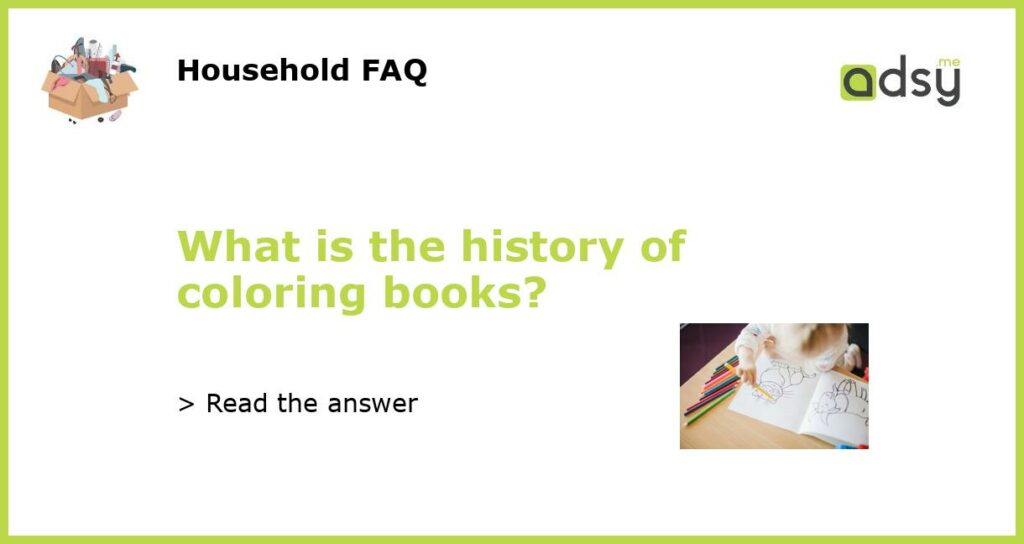The Origins of Coloring Books
Coloring books have been a popular pastime for children and adults alike for many years. The concept of coloring dates back to the 17th century, when it became popular for adults to color in black and white prints. The first coloring book specifically designed for children, however, did not appear until the 19th century. It was called The Little Folks’ Painting Book, and it contained outlines of animals and flowers for children to color in with watercolors.
The Golden Age of Coloring Books
In the early 20th century, coloring books began to see a surge in popularity due to advances in printing technology. This allowed for the mass production of coloring books with a wider variety of illustrations. The Golden Age of Coloring Books is considered to be the 1960s, when coloring books featuring popular TV and cartoon characters became a staple of children’s entertainment. This decade also saw the introduction of the first adult coloring books, featuring complex, intricate designs to appeal to a more mature audience.
The Role of Coloring Books in Education and Therapy
Coloring books have long been used in educational settings to teach children about different subjects. For example, coloring books featuring maps and landmarks can help children learn about geography and history. Coloring books have also been used as a therapeutic tool for both children and adults. Art therapy is a popular form of mental health treatment, and coloring books – particularly those featuring intricate designs – can be a way for people to relax and reduce stress.
Controversies Surrounding Coloring Books
Despite their popularity, coloring books have also been the subject of controversy. Some educators argue that coloring books can stifle creativity and discourage children from developing their own artistic skills. Others have criticized adult coloring books for promoting a consumerist mindset, with many marketed as a way to reduce stress and unwind from a busy day at work.
The Future of Coloring Books
Despite the criticisms, it seems that coloring books are here to stay. In recent years, there has been a resurgence of interest in adult coloring books, with more and more publishers releasing books with intricate designs for coloring enthusiasts. As technology continues to advance, there may even be new ways for people to enjoy coloring, such as digital coloring books or apps. Whatever the future holds, it is clear that coloring books will remain a popular pastime for many years to come.






